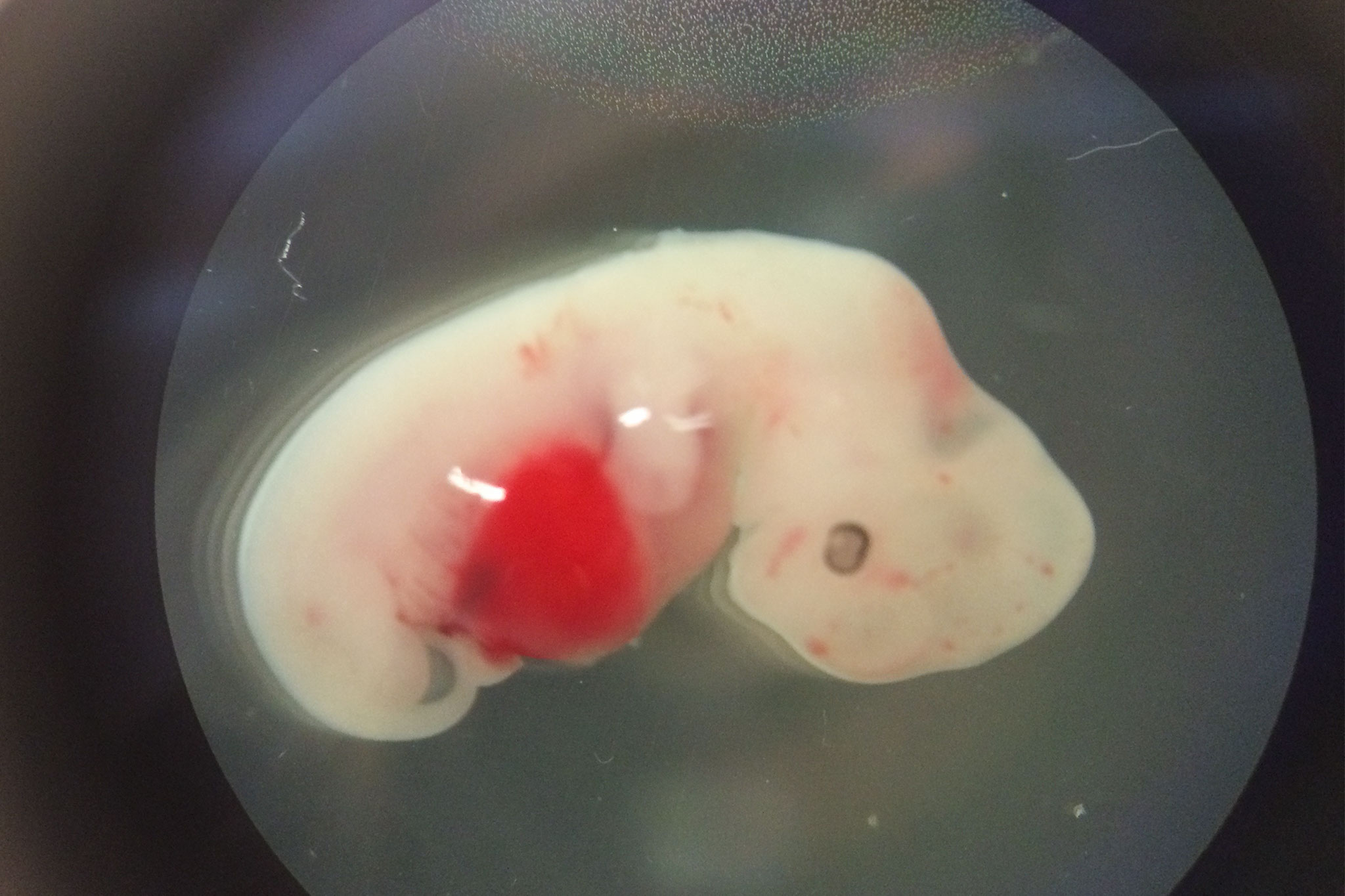The NIH (National Institute of Health) has recently lifted a moratorium on federal funding for research on “chimera embryos.” These embryos are created by genetically altering animal embryos and combining them with human stem cells.
This technology is being developed to allow for more accurate animal testing, and possibly to someday grow organs for transplant into humans. The possible benefits come with some very troubling potential ethical questions that have some science ethics watchdogs concerned over its development.
Animal hybridization has advanced, with recent studies growing mouse pancreas cells in rat embryos and using them to treat diabetes in mice. There have recently been studies working on growing human pancreases in pig embryos by genetically editing the fetus with a genome editing tool known as CRISPR to delete genes associated with the growth of a pancreas and then injecting human stem cells that would be used to grow human-like pancreases in the pig before returning the embryo to a sow’s womb. The pancreases still have far too much pig tissue to be viable as human transplants, but scientists are looking into ways to make the pig embryo tolerate higher numbers of human cells.
The ethical questions mainly concern the possibility of the stem cells placed in the embryos going to unforeseen places and becoming unexpected tissues. There is the possibility that some of the cells could go to the animal’s brain and have unforeseen effects on the structure of the mind.
While highly unlikely, theoretically, the following worst-case scenarios may be possible: Human-like intelligence may develop in an animal incapable of normal human communication. If the cells were to go into gamete production and the adult chimera pig were to mate with another chimera pig you could have an entirely human fetus developing inside the womb of a pig.
The reason some of these problems are so possible arise from the advantage of using chimeras for animal testing in the first place: Chimera pig organs will perform like human organs, giving better test results without the problems of human testing. The problem with that is that some of the most promising testing possibility would be with neurological conditions like Alzheimer’s Disease, which would encourage intentionally promoting the development of human-like brain tissues and structures in animals, possibly with no real way of testing for changes in consciousness.
There have already been studies of giving rats human glial cells, which are a type of brain cell that performs cellular processes like protein synthesis and cellular respiration for the neurons, but are not thought to be highly involved in consciousness. Rats with these cells performed twice as well at maze tests and memory tests as the control group of untreated rats.
As the secular world debates the ethics of chimeras, the Catholic Church has already expressed its concerns about the morality of the research. Regarding a bill in England that concerns several reproductive issues, the local bishops expressed concern about the requirement that all chimeric embryos be destroyed after research, saying that this would violate the organism’s right to life if it was mostly human.
In their submission, they said “At the very least, embryos with a preponderance of human genes should be assumed to be embryonic human beings, and should be treated accordingly. In particular, it should not be a crime to transfer them, or other human embryos, to the body of the woman providing the ovum, in cases where a human ovum has been used to create them. Such a woman is the genetic mother, or partial mother, of the embryo; should she have a change of heart and wish to carry her child to term, she should not be prevented from doing so.”



